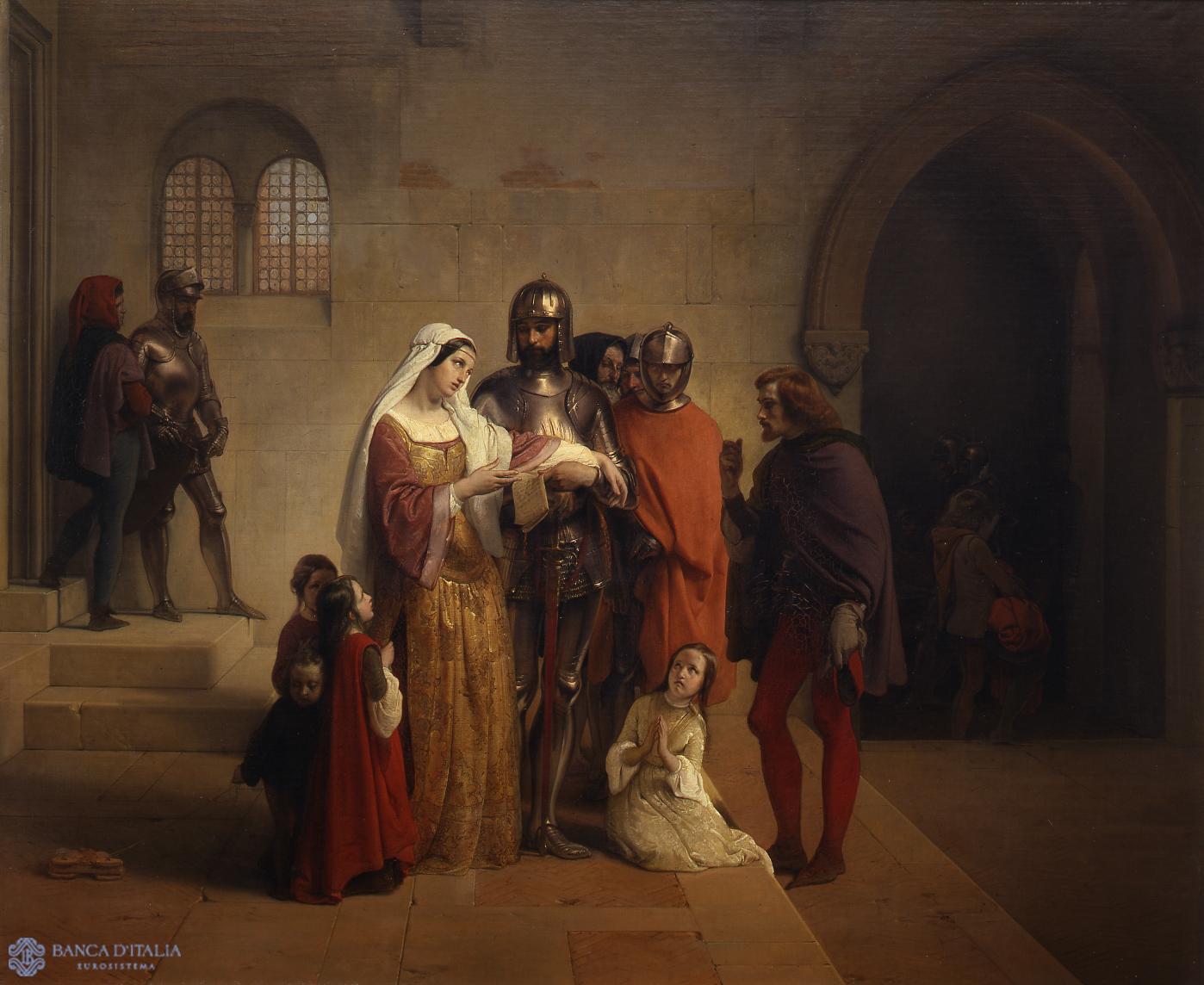Francesco Hayez (Venice 1791 – Milan 1882) played out his long career in Milan, where he moved in 1820. His early training was with the Venetian artists of the last part of the 18th century, but as early as 1809, in Rome, he met Canova and Ingres, two of the leading representatives of Neoclassicism and purism.
In 1820, the year of his arrival in Milan, his Pietro Rossi prigioniero degli Scaligeri was hailed, not only in Italy, as a sensational and highly effective instance of that strand of Romanticism that took up historical subjects as an indirect way of referring to contemporary events. At the time, for Italians and for Hayez, this meant the aspirations and uprisings that first prepared for and then carried out the Risorgimento.
In Milan, Hayez frequented such illustrious Italians as Rossini, Alessandro Manzoni and Antonio Rosmini and took an active part – in the Milanese salons held by men and women of whom he would leave several penetrating portraits – in the cultural debates of the day.
Venetian colourism, emotional intensity, themes that directly involve the viewer (for instance, his famous Bacio – the kiss), psychological insight in a substantial output of portraits in direct competition with Ingres – these are the factors that assured Francesco Hayez a leading role in the northern Italian painting of the 19th century.
Francesco Hayez
Francesco Hayez (Venice 1791 - Milan 1882)
19th century AD

Compiler
Antonio Del Guercio


